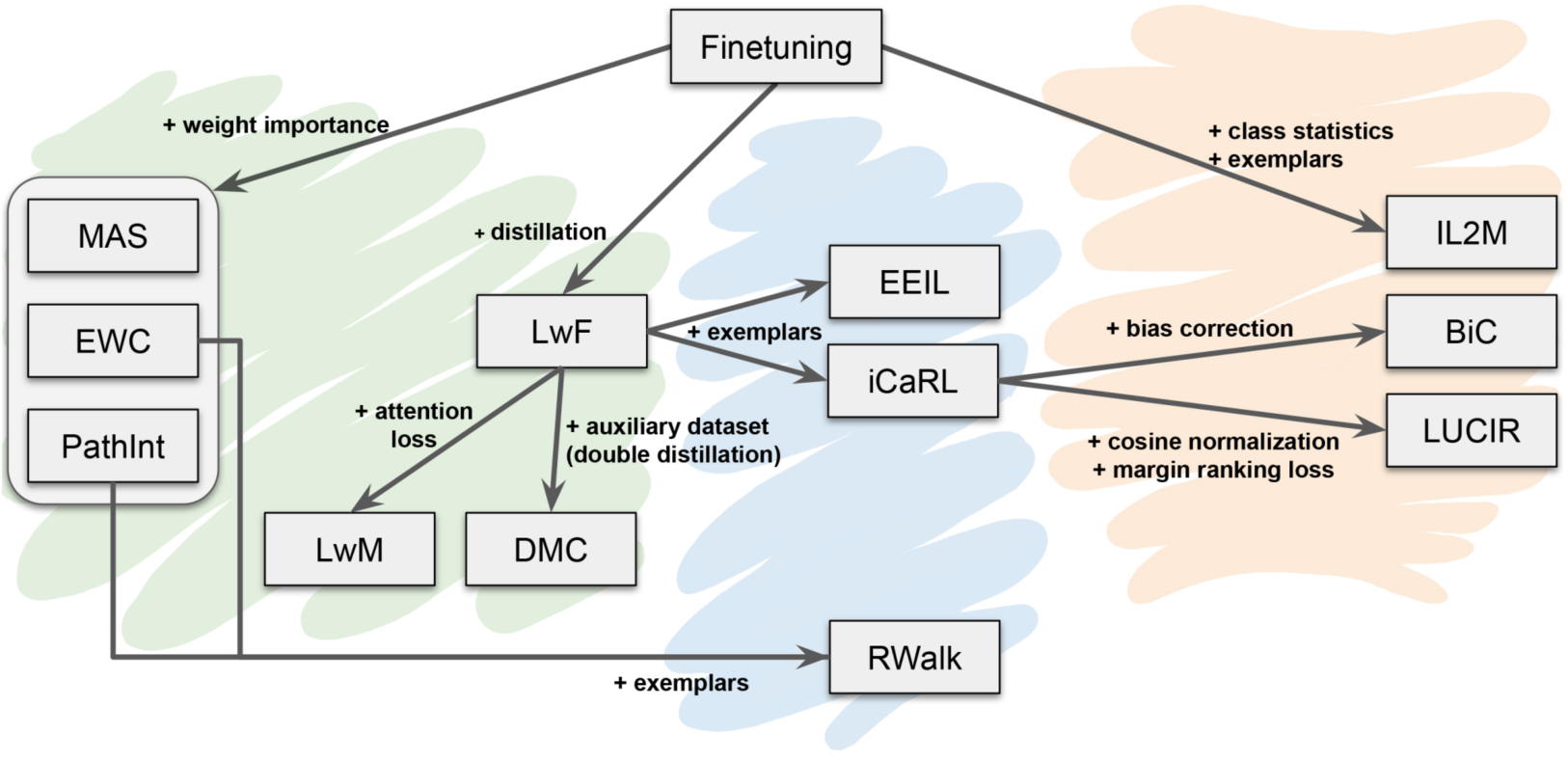Run the code with:
python3 -u src/main_incremental.py
followed by general options:
--gpu: index of GPU to run the experiment on (default=0)--results-path: path where results are stored (default='../results')--exp-name: experiment name (default=None)--seed: random seed (default=0)--save-models: save trained models (default=False)--last-layer-analysis: plot last layer analysis (default=False)--no-cudnn-deterministic: disable CUDNN deterministic (default=False)
and specific options for each of the code parts (corresponding to folders):
--approach: learning approach used (default='finetuning') [more]--datasets: dataset or datasets used (default=['cifar100']) [more]--network: network architecture used (default='resnet32') [more]--log: loggers used (default='disk') [more]
go to each of their respective readme to see all available options for each of them.
Initially, the approaches included in the framework correspond to the ones presented in Class-incremental learning: survey and performance evaluation (preprint , 2020). The regularization-based approaches are EWC, MAS, PathInt, LwF, LwM and DMC (green). The rehearsal approaches are iCaRL, EEIL and RWalk (blue). The bias-correction approaches are IL2M, BiC and LUCIR (orange).
More approaches will be included in the future. To learn more about them refer to the readme in src/approach.
To learn about the dataset management refer to the readme in src/datasets.
To learn about the different torchvision and custom networks refer to the readme in src/networks.
We implement the option to use a realistic grid search for hyperparameters which only takes into account the task at hand, without access to previous or future information not available in the incremental learning scenario. It corresponds to the one introduced in Class-incremental learning: survey and performance evaluation. The GridSearch can be applied by using:
--gridsearch-tasks: number of tasks to apply GridSearch (-1: all tasks) (default=-1)
which we recommend to set to the total number of tasks of the experiment for a more realistic setting of the correct learning rate and possible forgetting-intransigence trade-off. However, since this has a considerable extra computational cost, it can also be set to the first 3 tasks, which would fix those hyperparameters for the remaining tasks. Other GridSearch options include:
--gridsearch-config: configuration file for GridSearch options (default='gridsearch_config') [more]--gridsearch-acc-drop-thr: GridSearch accuracy drop threshold (default=0.2)--gridsearch-hparam-decay: GridSearch hyperparameter decay (default=0.5)--gridsearch-max-num-searches: GridSearch maximum number of hyperparameter search (default=7)
We have some utility functions added into utils.py.
